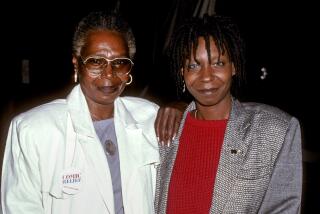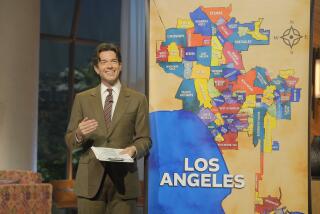DRIVE-INS SHINE IN THE SUNBELT
Hardly a day passes, says Theatre Assn. of California President Bob Selig, when someone doesn’t call and ask, “Is this the year the drive-in dies?”
“I just got a call from a writer in Boston saying two more (drive-ins) closed there,” Selig says. “He wanted to know if that meant the end was near.”
And the answer?
Not if you live in the Sunbelt.
“Drive-ins are thriving in the Sunbelt states,” Selig says. “In non-Sunbelt states, they are being put to more productive use . . . flea markets, shopping centers.”
Drive-ins in the Snowbelt are not financially strong enough to book first-run major studio movies, says Selig, leaving them to struggle through shortened seasons with double bills of older titles or X-rated movies.
“Out here, we run day and date with the walk-ins,” Selig says. “On many occasions, we outgross the walk-ins in the same competitive zone during the summertime.”
Selig says the drive-ins are enjoying the same proportionate boom in business this year as the walk-ins, where admissions are up more than 10% over the same period last year.
The increased business at both the walk-ins and drive-ins is mostly attributable to the better product line coming out of Hollywood. But the drive-ins are also gaining in appeal as entertainment costs continue to rise elsewhere.
Selig, who is also a vice president at Pacific Theaters, says drive-ins are still “neckers’ paradise,” but because of their economic advantage to young families, the ratio is shifting.
According to a recent survey, 72% of drive-in business now comes from families with two or more children. At most drive-ins, children under 12 are admitted free.
To compare walk-in and drive-in costs within the Pacific chain, assume a couple with two under-12 children are going out to see “Can’t Buy Me Love.”
At Pacific’s Metro in Westwood, tickets for the four ($6 for adults, $3 for children) would total $18. Figure another $3 for parking.
At Pacific’s Winnetka Drive-In, the same family would pay $8, and they would get “Adventures in Babysitting” as a bonus second feature.
Obviously, you pay less because you get less. Watching a good movie in a drive-in is like eating a good meal with a cold. The image on the screen is never bright enough to drown out the ambient light reflected off the sky, and at those drive-ins still using external boxed speakers, it helps to be able to read lips.
Where sound tracks are broadcast over AM or FM bands and picked up by your car radio, you can at least match--and usually beat--the quality of sound you get from your television set.
Certainly, the death of the drive-in, like Mark Twain’s, is being greatly exaggerated. Selig says the total number of drive-ins is down to 2,813 from its 1956 peak of 4,063. But many drive-ins, like older walk-ins, have been plexed-- divided up and had screens added--so the actual decline is much less than it appears.
Beyond that, drive-ins have become prime real-estate investments for their owners. Most drive-ins sit on a minimum of 10 acres of land, and, because their sites were chosen for proximity to major highways and freeways, cities have grown up around them.
Selig says the current trend among drive-in operators is to put some of the excess land to income-producing use. The drive-in in San Pedro, he says, has leased space for public storage garages and a retail business center while keeping two screens going in back.
Meanwhile, there are innovations on the way. Pacific, he says, is looking into a treadmill system that would move people from their cars to the concession stands. Research is being conducted in Japan on a new curved screen that would confine images to the sight lines of paying customers in their cars.
The curved screen will solve one problem that the drive-in owners didn’t foresee when they located next to highways. How to keep people in G-rated traffic from slamming into each other while watching R-rated movies.
VALENS TIME: Rock promoter Bob Keane, who is portrayed in the film “La Bamba” as the man who discovered Ritchie Valens, said that he’s happy the movie is doing well but that the real Ritchie Valens story is yet to be told.
“They did a good job coming up with an entertaining movie,” Keane said. “But you don’t see Ritchie in it.”
Keane served as a technical consultant on “La Bamba” and said he was paid very well for it, especially when you consider how much he was asked to do.
“I went in and talked to them for about six hours,” he said. “I gave them the best input I could. I told some interesting anecdotes they could use to bring out his personality. They didn’t use any of them.”
Keane said that Valens had a far more fiery personality than is portrayed in the film and that the girl who inspired Valens to write the hit song “Donna” was little more than a casual acquaintance. In the movie, he is obsessed with her and they are planning to be married when he is killed in a plane crash.
Keane said he ran into the real Donna at the “La Bamba” premiere.
“Donna is the manager of a savings and loan in Palo Alto,” he said. “She’s big, blond, heavyset. . . . She was having a great time. I hardly knew her when Ritchie was alive.”
Keane said that he is trying to put together financing to do a documentary on Valens. If he does, the documentary will have a couple of advantages for people interested in the real character.
One is that it will tell the “real story,” Keane said. The other is that it will use the real music.
For the movie, Columbia Pictures re-created Valens’ hits with the rock group Los Lobos, with lead singer David Hidalgo doing Valens’ voice.
The official reason for using Hidalgo was that Valens’ original voice tracks weren’t usable. Keane said that the original voice tracks are fine and that, in fact, he just used them with all new background music for his “La Bamba ‘87” album.
“I’m not upset about it; this is show business, right?,” Keane said. “But it is bull.”
UP AND DOWN THUMBS: It is no wonder that so many good scripts go through years of rejection in Hollywood. The studios don’t even know if their films are any good when they’re finished.
When a studio decides not to screen a new movie in advance for critics, it is safe to assume that a consensus of top executives agrees that critics will hate it. It is not safe to assume they’re right.
Paramount was so concerned for “Back to the Beach,” the Frankie Avalon/Annette Funicello reunion, that it withheld it from prying critics’ eyes until opening day--even though its marketing people happily trotted the old stars out for pre-release promotional appearances and interviews.
Surprise. The movie got mostly good reviews.
Universal was absolutely right in its thumbs-down judgment of its “Jaws: The Revenge.” Naive shark fans were led to the slaughter by the studio’s strong ad campaign (this is a good way to win customer loyalty: trick them), and the movie did a quick $7 million before the word went forth.
But the same studio withheld Cheech Marin’s “Born in East L.A.” and the movie got rave reviews from some critics, despite their having to traffic with paying customers over the weekend.
If you can’t trust a studio’s tip about its own worst products, who can you trust?
More to Read
The biggest entertainment stories
Get our big stories about Hollywood, film, television, music, arts, culture and more right in your inbox as soon as they publish.
You may occasionally receive promotional content from the Los Angeles Times.






